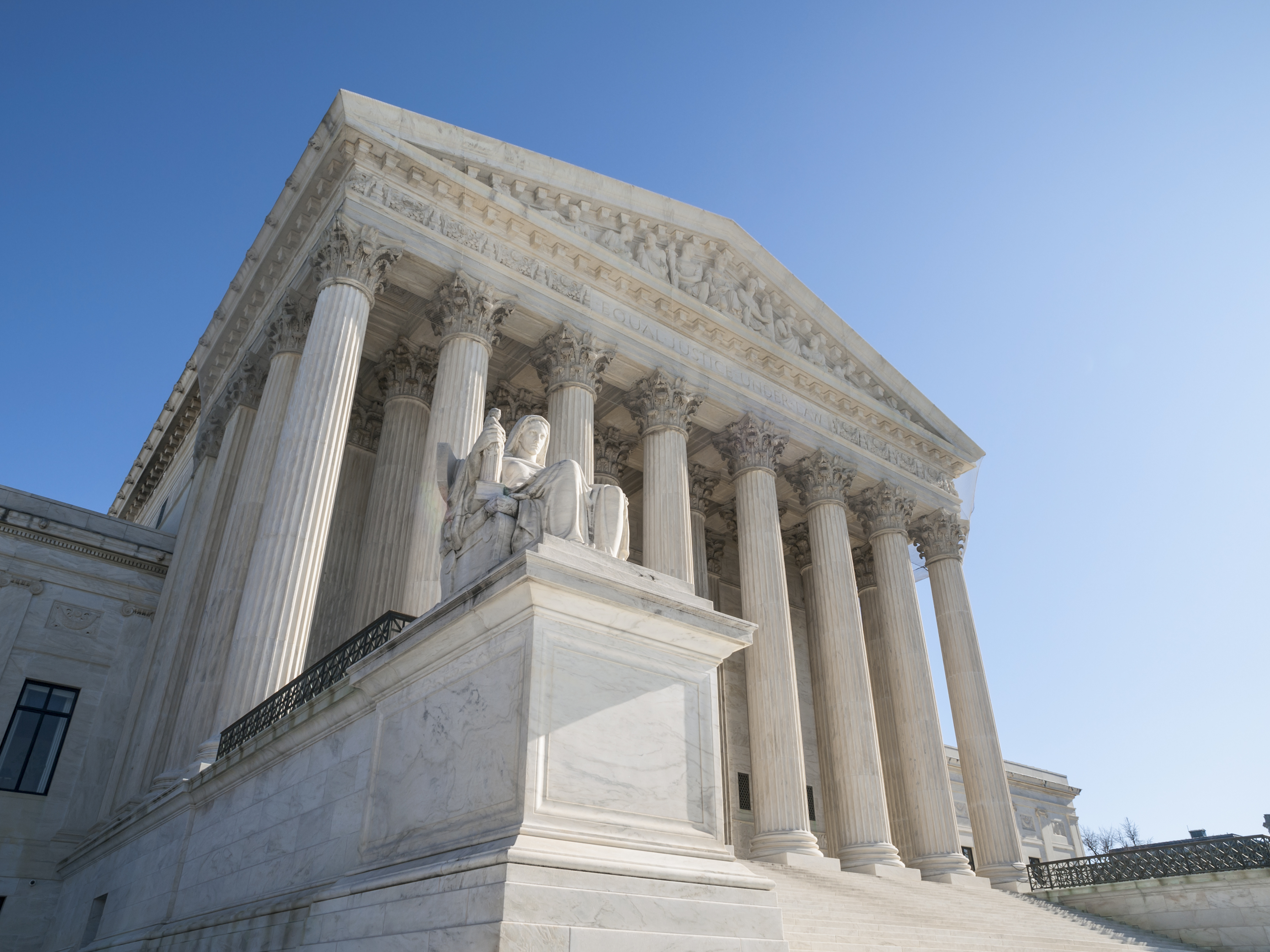
In more than two hours of arguments, neither side seemed to believe there was much doubt that Republicans in North Carolina had pushed through a congressional redistricting plan that would keep their lopsided majority in what has become a purple state. Or that Democrats in Maryland had redrawn lines to eliminate one of the two districts in the blue state capable of electing a Republican.
But once again, conservative justices, who make up the majority on the court, wondered how the judiciary should intervene in what is an inherently political process, and what standard would guide how to determine excess.
If technology has made thousands of potential maps available to state lawmakers who draw the districts, conservative Justice Samuel Alito asked, "How do you determine whether that choice is constitutional?" He added: "It's a real puzzle to me."
Liberal Justice Stephen Breyer said the solution was to go after the outliers. He suggested a test - which didn't seem to get much traction among his colleagues - that would raise constitutional concerns when a majority party in a state with near parity draws a map that would give it two-thirds of the seats.
That is similar to the North Carolina map before them.
The Supreme Court regularly scrutinizes electoral districts for racial gerrymandering, but the justices have never found that a state's redistricting map was so skewed by partisanship that it violates a voter's constitutional rights. Such a decision would mark a dramatic change for how the nation's political maps are drawn.
The court passed up the chance last term to settle the issue. It sent back on technical grounds a Republican-drawn plan in Wisconsin and the challenged Maryland map.
A reconfigured court was considering the issue Tuesday. Justice Anthony Kennedy, who suggested that some political gerrymandering could be so extreme that it was unconstitutional but had never settled on a test, has been replaced with Justice Brett Kavanaugh. The new justice is generally more conservative but has not ruled on the issue in the past.
Kavanaugh asked pointed questions of both sides. He wondered whether plans that differed dramatically from proportional representation might be suspect, while all agreed the Constitution does not require it.
When Alito and Chief Justice John Roberts worried about what kind of test judges could use to determine extreme partisanship, Washington lawyer Paul Clement, representing North Carolina's GOP legislative leaders, suggested the problem is that the framers put drawing electoral lines in the hands of the political branches, and did not intend a role for the judiciary.
Liberal justices did not buy it. "That ship has sailed," said Justice Sonia Sotomayor.
Justice Ruth Bader Ginsburg agreed, saying the court became involved decades ago when deciding districts had to be fairly apportioned.
"Does one person have one vote that counts equally with others if the impact of her vote is reduced based on her party affiliation?" she asked. Justice Neil Gorsuch suggested that if there was a problem with extreme partisan gerrymandering, voters could take care of it, as they did in five states in the fall where citizen initiatives reigned in legislatures.
But lawyers for the plaintiffs and Justice Elena Kagan reminded him most states do not allow voters to take the lead. "People really can't fix it," she said during the argument on the North Carolina map, saying that it is what made it so "dramatically wrong here."
The Maryland case was not new to the justices. In June, they said it was not ready for them and sent it back. In November, a unanimous three-judge panel found that Democrats had unconstitutionally targeted Republican voters in the 6th Congressional District because of their past votes. The legislature had redrawn the district, which previously stretched across the top of the state, to dip down into Democratic strongholds in the Washington suburbs.
"The massive and unnecessary reshuffling of the Sixth District, involving one-half of its population and dictated by party affiliation and voting history, had no other cause than the intended actions of the controlling Democratic officials to burden Republican voters," wrote Judge Paul Niemeyer of the U.S. Court of Appeals for the 4th Circuit. He was joined by U.S. District Judge George Russell.
Chief U.S. District Judge James Bredar wrote a separate opinion agreeing with the overall judgment and declaring partisan gerrymandering "a cancer on our democracy."
The Supreme Court had also sent back the North Carolina case last term, telling a special panel of three federal judges to decide whether challengers in that state had legal standing. The judges said they did, and also found that the legislature's efforts violated constitutional protections of equal protection.
The North Carolina legislature "drew a plan designed to subordinate the interests of non-Republican voters not because they believe doing so advances any democratic, constitutional, or public interest, but because, as the chief legislative mapdrawer openly acknowledged, the General Assembly's Republican majority 'think[s] electing Republicans is better than electing Democrats,' " wrote Judge James Wynn of the U.S. Court of Appeals for the 4th Circuit. "But that is not a choice the Constitution allows legislative mapdrawers to make."
Wynn was referring to comments from a legislative leader after a previous map was struck down as an example of racial gerrymandering that made clear politics was the motive behind the new map.
"I think electing Republicans is better than electing Democrats," said Rep. David Lewis, a Republican member of the North Carolina General Assembly, addressing fellow lawmakers when they passed the plan in 2016.
He added: "I propose that we draw the maps to give a partisan advantage to 10 Republicans and three Democrats because I do not believe it's possible to draw a map with 11 Republicans and two Democrats."
When voters went to the polls that fall, the 10-3 outcome was exactly as Lewis had predicted, even though Republican candidates won just 53 percent of the statewide vote. The trend continued in the fall's elections, although Democrats actually received a majority of votes.
Two of the districts are open, one because of the death this year of one of the Republican congressmen. The other was a close contest marked by alleged election fraud on behalf of a GOP candidate. The winner was never seated, and a new election will be held.
Sign up for the daily JWR update. It's free. Just click here.
(COMMENT, BELOW)


 Contact The Editor
Contact The Editor
 Articles By This Author
Articles By This Author